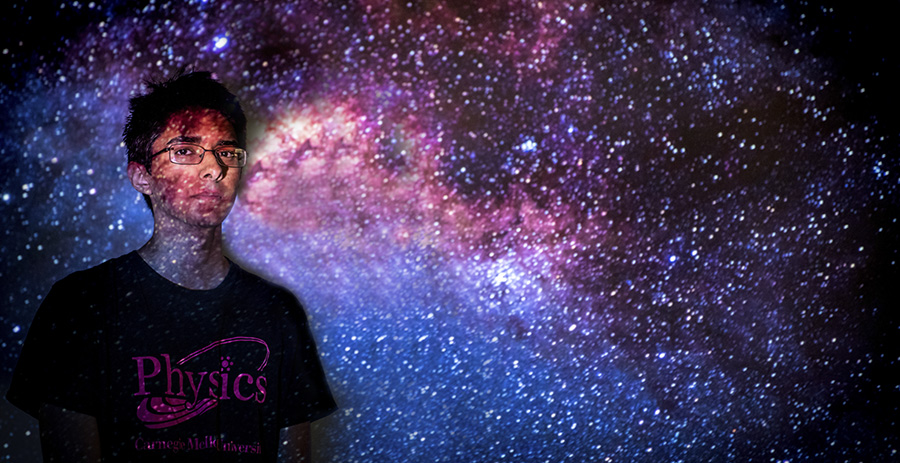Undergraduate Explores Mysteries of the Universe
By Michael Henninger
Nihar Dalal often loses himself in his work, and he likes it that way.
The rising sophomore spent his summer modeling the number of galaxies expected to be seen by the yet-to-be-launched James Webb Space Telescope under the direction of Professor Hy Trac. These models combine observed and simulated data, and their predictions will be verifiable once Webb is launched and operational.
"I've always wanted to unravel the mysteries of the universe," Dalal said. "I think math and physics give the best answers to those questions. Space tells us so much because it's so vast. Light takes time to travel to us, so when we look out, it's like we're looking at a snapshot of the past."
During his first semester at Carnegie Mellon University as a double major in mathematical sciences and physics, Dalal knew almost immediately that he wanted to conduct research as an undergraduate. His penchant for choosing the hardest classes possible with a group of like-minded friends left him no capacity to take on a project during the school-year, so he moved his research plans to summer.
Dalal applied and received a Summer Undergraduate Research Fellowship (SURF) through the Undergraduate Research Office, which provided him $3,500 to pursue the proposed topic of his choice. This year, 96 students were awarded research funding through the SURF program, which has existed at CMU since the mid '90s.
"I've had fantastic professors so far," Dalal said. "The faculty at CMU are so open and committed to their student's successes. The fact that I was able to find research in my freshman year at this level is incredible."
The James Webb Space Telescope (named for a former NASA administrator) is the successor to the Hubble telescope and is slated to launch in 2021. The effort behind the telescope is a collaboration between NASA, the European Space Agency (ESA), and the Canadian Space Agency (CSA).

Nihar Dalal
"Hubble was launched almost 30 years ago," Dalal said. "The James Webb Telescope is going to look farther away than we've ever seen before. Launching a telescope of James Webb's caliber gives every astronomer, astrophysicist and cosmologist access to the best data they can possibly get. Put it this way, if the Hubble was a flip phone, James Webb is an iPhone X."
Once Webb launches, Dalal will verify if he was accurately able to predict the number of galaxies the telescope sees at certain distances and brightness levels. If the predictions are off, that would indicate that something is happening in the universe that isn't represented in the simulations in use today.
"If the predictions don't match what Webb is seeing, that's pretty significant, because that suggests there's some new theory we haven't considered, or something about the start of the universe we don't know yet," Dalal said.